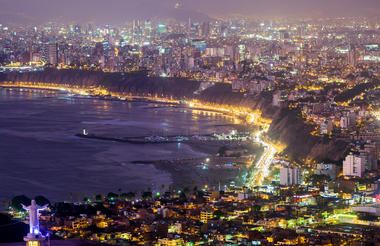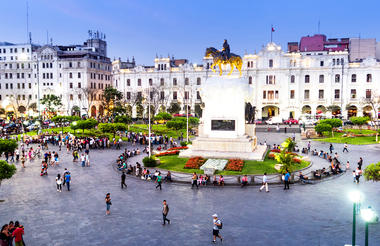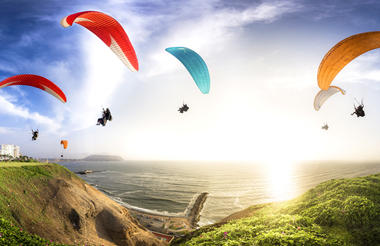Quito, the capital of Ecuador, lies on the slopes of the Andes’ mighty Pichincha volcano in the Guayllabamba river basin. The city’s Old Town is its main attraction - one of the most well preserved in Latin America and the first-ever UNESCO heritage site. Wander among ancient, colourful streets; pop into glorious historic churches; or spend an afternoon browsing the vibrant Mercado (markets) and learning about the unique, traditional Ecuadorian Sierra culture. Other bucket list items in Quito include a visit to the impressive Casa Museo Guayasamín; the Museo de la Presidencia which provides insight into Ecuador’s history; and a climb up the iconic towers of the Basilica. Numerous gorgeous public parks and a thriving and exciting culinary scene complete the package.
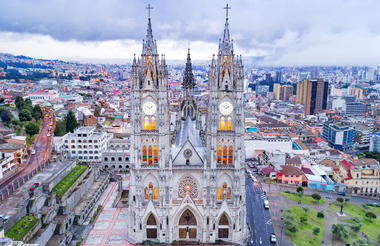
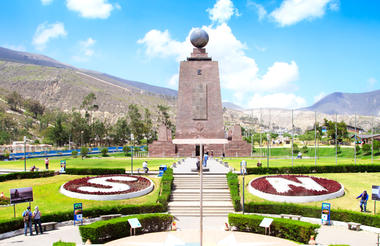
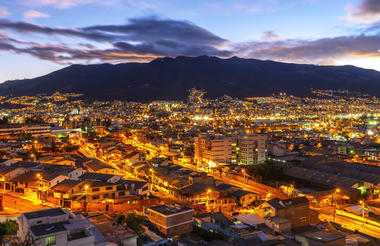
Located in the central part of the Galápagos archipelago, the small, flat island of Baltra (also known as South Seymour Island) is the only island not included within the Galápagos National Park, as it serves primarily as the site of the archipelago’s main airport and a small Ecuadorian military base. With its starkly arid landscape and sparse vegetation of prickly pear cacti, salt bushes and palo santo trees, arriving here can feel like landing on another planet. As Baltra is a designated non-visitor site, travellers are swiftly transferred by bus to one of two docks, where they board either a cruise ship or a ferry bound for nearby Santa Cruz Island.



San Cristóbal is the easternmost island in the Galapagos archipelago as well as the most populated. Famous for its natural attractions, the island also boasts some wonderful shopping and dining opportunities as well as a local airport. Take a break from snorkeling and hiking to enjoy the best Ecuadorian cuisine, or admire some of the exquisite artwork and designs at local galleries and markets. Must-see attractions include the Galapaguera Tortoise Reserve; the Interpretation Center (which provides important background information on the Galapagos); and Puerto Grande, a protected cove on the north-western side of the island boasting a magnificent white sandy beach - ideal for a peaceful walk, swim or photography sesssion.



Perched at the southern edge of the Galápagos archipelago, Española Island, Ecuador, exudes a raw, untamed beauty. Its windswept cliffs, golden beaches, and rugged lava formations create a dramatic backdrop where wildlife reigns supreme. Visitors are captivated by the island’s most famous residents: seasonally, thousands of waved albatrosses perform intricate courtship dances, playful sea lions basking on sun-warmed rocks, and vibrant marine iguanas dotting the shores. Snorkelling in crystalline waters reveals a kaleidoscope of tropical fish, while the rhythmic crash of waves against cliffs underscores the island’s isolation. Accessible only via guided tours, Española offers a tranquil yet exhilarating encounter with nature, rewarding travellers with rare glimpses of one of the world’s most pristine and extraordinary ecosystems.



Floreana Island is located in the far southern portion of the Galapagos archipelago. As the first of the islands to support permanent human habitation, Floreana boasts a rich heritage complete with tales of buccaneers, pirates, whalers, convicts, and colonists. Visitors are invited to follow in the footsteps of whalers in the 1700s and drop a postcard into the famous "post office" barrel. At the island's northern tip is Punta Cormorant, with its two beaches, one of which forms a nesting site for Galapagos green turtles and is aptly named "Flour Beach" for its soft, powder-white sand. Between these two beaches lies a salt lagoon frequented by long-legged greater flamingoes and other shorebirds. Floreana's unique human history, fascinating geology, remarkable wildlife, and the little village of Puerto Velasco Ibarra, offering excellent lodging and food, make an ideal base for visitors looking to explore these unforgettable islands.



Resting on the coast of central California, the bustling seaside city of Santa Cruz is a well-known surfing hub, boasting the famous Steamer Lane surf site, as well as the Santa Cruz Surfing Museum. The sun-drenched beaches provide perfect opportunities for a variety of other outdoor activities from stand-up paddleboarding to sunbathing and volleyball. Along the wharf, visitors can find many eateries and shops as well as the Seymour Marine Discovery Centre, where you will find a blue whale skeleton on display. Visitors can also look forward to exploring the many parks, wineries, farmers’ markets and hiking trails in the area. Not-to-be-missed are the giant redwoods in Henry Cowell Redwoods State Park, where visitors can experience the impressive landscape while enjoying mountain biking or canopy tours.



Rising dramatically from the crystalline waters of the Galápagos, Genovesa Island exudes a wild, otherworldly energy. Known as the “Bird Island,” it is a sanctuary for immense colonies of seabirds, including red-footed boobies, frigatebirds, and Nazca and swallow-tailed gulls, whose cries echo across its rugged cliffs. Visitors can explore the island’s volcanic caldera on foot along winding trails that reveal dramatic cliffside vistas, or snorkel in sheltered coves teeming with tropical fish, rays, and curious sea lions. The scent of salty sea air mingles with the vibrant colours of nesting birds, creating an immersive sensory experience. Genovesa is an intimate encounter with raw, untamed nature, where every step and splash feels like discovery.



Peru’s capital is a fantastic city to tour, dotted with a multitude of cultural sites and beautifully preserved architecture. Founded by the conquistador Francisco Pizarro in 1535, Lima was first named ‘City of Kings’ – a biblical reference to the ‘Three Wise Men of the East’ – before its name was changed by the Spanish colonialists. The most significant historical buildings are located around the Plaza Mayor, the most notable being the Government Palace, where one can still observe the changing of the guard performed by the Húsares de Junín. The beautiful Cathedral and the various small palaces and colonial balconies also play also their part in the beauty of the city. Another highlight is the famed Larco Herrera Museum, documenting the millennial cultures that preceded the Inca civilization and containing a priceless collection of pre-Columbian artifacts, including some of South America's finest pre-Inca erotic pottery.
